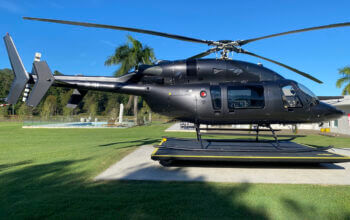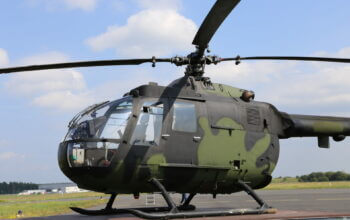Quantum computing could play a key role in optimizing flight operations for large numbers of urban air mobility (UAM) vehicles, new research from Sumitomo Corporation, OneSky Systems, and Tohoku University suggests.
The collaborators last week announced the completion of Phase 1 of their UAM quantum computing pilot program, meant to demonstrate how quantum computing can develop an optimized real-time, three-dimensional air traffic control system for high-density UAM operations.
The research is part of Sumitomo Corporation’s Quantum Transformation project, which aims to use quantum computing to achieve efficiencies across diverse industries. OneSky, which Sumitomo acquired a stake in last year, is contributing its expertise as a provider of unmanned aircraft systems traffic management (UTM). Tohoku University brings extensive research experience in quantum annealing, a quantum computing method used to solve optimization problems.
Such problems are likely to arise regularly in future UAM operations. As OneSky explained, strategic deconfliction and dynamic scheduling during flight planning can help ensure that UAM vehicles are safely separated from each other and other types of aircraft. Nevertheless, unforeseen contingencies such as weather events or vertiport closures could require an aircraft to dynamically change its route in flight, causing cascading conflicts for other operations.
The addition of further scheduling considerations such as airspace corridors, vertiport infrastructure, and demand modeling “will ultimately lead to numerous massive and complex data sets,” necessitating advanced solutions to solve these tactical deconfliction problems in real-time, OneSky said.
Initial results from the quantum computing pilot program are promising. The research team reported that they were able to “drastically optimize the utilization of resources and airspace” in their simulations, increasing the density of aircraft flying simultaneously by roughly 70 percent. They found quantum computing to be about 10 times faster than conventional computers in solving certain problems.
“In the future, quantum computers will be able to identify hundreds of thousands of optimized flight routes as their performance improves,” OneSky predicted.
OneSky is one of the airspace partners selected to participate in NASA’s Advanced Air Mobility National Campaign, which is intended to lay the groundwork for such large-scale UAM operations in the United States. OneSky reported earlier this year that it is working with eVTOL developer Wisk Aero in the context of the National Campaign, in addition to several companies external to the campaign, including the UAM division of Hyundai Motor Group and infrastructure developer Skyports.








